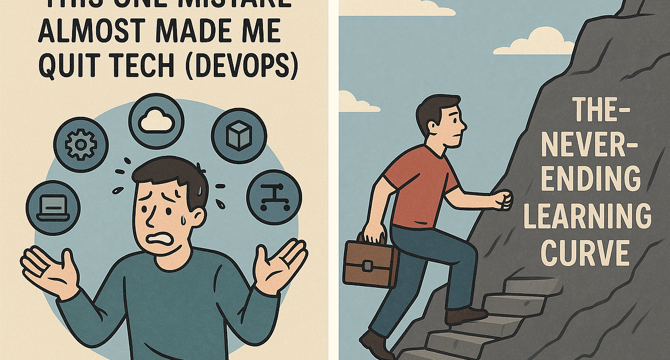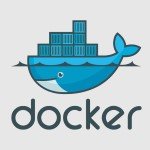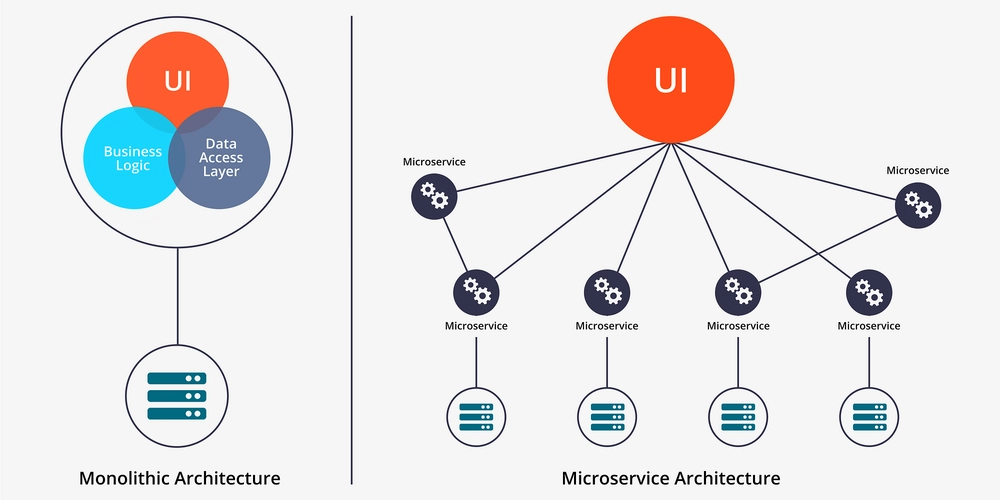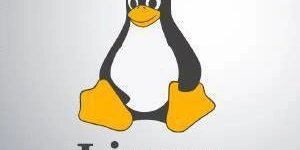Devops News
Solarwinds
314

Image Credit: Solarwinds
Join the Global IT Revolution at the SolarWinds 2025 World Tour
- Gain Valuable Insights: The SolarWinds 2025 World Tour offers a comprehensive range of sessions and activities that cover the most pressing topics in the IT industry.
- Participate in Hands-On Learning: Take part in product demos, technical talks, and roundtables with industry leaders.
- Grow Networking Opportunities: Network with peers, industry experts, and thought leaders from 23 cities around the globe.
- Access Expert Knowledge: Learn from top-tier speakers and experts who will share their experiences, insights, and strategies.
Read Full Article
17 Likes
Solarwinds
409

Image Credit: Solarwinds
Why Businesses Must Align People, Processes, and Technology to Thrive
- Businesses often face disconnect and inefficiencies due to siloes and fragmentation in people, processes, and technology.
- Disconnected systems lead to frequent outages, slow incident resolution, lost revenue, and inefficient workflows.
- To achieve operational resilience, businesses should break down silos, leverage intelligent tools, address team adoption challenges, and unify systems.
- By aligning people, processes, and technology, businesses can overcome inefficiencies and drive growth.
Read Full Article
24 Likes
Dev
96

Image Credit: Dev
Mastering Python Project Management with uv: Part 4 — CI/CD & Docker
- The article focuses on using uv, a modern package manager, for CI/CD and Docker workflows in Python project management.
- It discusses Dockerizing apps the modern way, using docker-compose for local development, and automating CI/CD with GitHub Actions.
- The two-stage Docker build pattern enhances build speed, clean dependency separation, image size, and security.
- Stage 1 involves installing uv, build dependencies, and leveraging layer caching for faster builds.
- Stage 2 focuses on a lean runtime environment with only essential components, resulting in smaller images that load faster and are more secure.
- The article details the benefits of uv, including smaller images, faster CI/CD, cleaner production, better security, reproducibility, and speed in the context of Docker builds.
- It also highlights using docker-compose with uv for fast iteration, clean environments, environment isolation, and health checks.
- GitHub Actions with uv are discussed for linting, testing, building, and publishing Docker images in a reproducible and secure manner.
- The article emphasizes the benefits of uv and Docker builds in improving speed, reproducibility, cleanliness, and security in CI/CD pipelines.
- It concludes by highlighting the simplicity and power of the DevOps pipeline created using uv, Docker, ruff, and GitHub Actions for Python projects.
- The stack offers benefits like faster iteration, safer builds, simpler onboarding, and reproducibility, enhancing team productivity.
Read Full Article
5 Likes
Medium
318

Image Credit: Medium
This One Mistake Almost Made Me Quit Tech (DevOps).
- Tech professionals are feeling overwhelmed with constantly learning new technical skills in the fast-paced industry.
- The pressure to keep up with new frameworks, cloud services, and development practices is causing frustration.
- Communication skills, problem-solving abilities, and teamwork are undervalued in comparison to technical knowledge.
- While continuously studying is necessary, the importance of being a good colleague and effective communicator needs to be recognized.
Read Full Article
18 Likes
Discover more
- Programming News
- Software News
- Web Design
- Open Source News
- Databases
- Cloud News
- Product Management News
- Operating Systems News
- Agile Methodology News
- Computer Engineering
- Startup News
- Cryptocurrency News
- Technology News
- Blockchain News
- Data Science News
- AR News
- Apple News
- Cyber Security News
- Leadership News
- Gaming News
- Automobiles News
Javacodegeeks
306

Image Credit: Javacodegeeks
Docker Buildx: Understanding the Multi-Platform Build Process
- Docker Buildx is a powerful tool that allows developers to create container images for multiple platforms from a single codebase using BuildKit.
- Buildx uses a directed acyclic graph (DAG) approach for efficient parallel execution of build operations, unlike the sequential execution in the original Docker builder.
- The architecture of Buildx includes components like different drivers, builder instances, and efficient build context processing.
- Builder instances in Buildx support native building, cross-compilation, and QEMU emulation for building on different platforms.
- Buildx optimizes the build context by transferring only changed files, reducing data transfer for incremental builds.
- The Buildx process includes phases like initialization, builder setup, context processing, build planning, execution, and output processing.
- During execution, Buildx handles single and multi-platform builds, pulls base images, executes build steps, and creates platform-specific container images.
- The final phase involves pushing images to registries, loading images locally, or exporting artifacts to specified locations.
- Buildx leverages content-addressable storage for cache efficiency and supports factors like host architecture, build parallelism, and network bandwidth for performance.
- By understanding Docker Buildx's operations, developers can optimize their build processes and efficiently manage multi-platform container development.
Read Full Article
18 Likes
Dev
100

Image Credit: Dev
15 Free Status Page Tools in 2025
- Having a status page is crucial for transparency during downtimes and outages, with many tools available for free in 2025.
- Popular options like Downdetector and UptimeRobot now require paid plans for status page features.
- Hosted tools like StatusGator, OpenStatus, and Hyperping offer free plans with various monitoring features and integrations.
- Atlassian Statuspage and Better Stack provide public pages with limited features on their free plans.
- Cronitor stands out with cron job monitoring, while Instatus offers a slick UI for status pages.
- Open-source tools like Uptime Kuma, LambStatus, and Staytus offer full control for self-hosted status pages.
- Tools like Upptime and Vigil run entirely on GitHub, appealing to developers for easy integration.
- Key features to look for in a status page tool include real-time monitoring, custom branding, multiple notification channels, API support, and incident history access.
- Setting up a status page is essential for building trust with users, and the variety of free tools available caters to different user preferences and needs.
- Whether opting for a hosted solution with pre-built features or an open-source tool for full customization, users can find a suitable status page provider listed in the article.
Read Full Article
6 Likes
Dev
132

Image Credit: Dev
Monoliths vs. Microservices: A No-Nonsense Guide for Devs
- Monoliths are all-in-one apps, while microservices are a team of specialized features.
- In a monolith, if one part breaks, the whole app is affected; in microservices, if one piece crashes, the others keep functioning.
- Microservices offer flexibility and resilience, while monoliths are simpler and easier for small projects.
- Factors to consider in choosing between monoliths and microservices include cost, team size, and project goals.
Read Full Article
7 Likes
Devopsonline
196

Image Credit: Devopsonline
How to prepare your home for climate change
- Climate change is a pressing issue, and preparing your home for its impact is crucial to your comfort and safety.
- Being proactive and realistic about potential scenarios, like power outages, is essential for every household.
- Having a well-equipped blackout bag with essentials like a radio, flashlight, first-aid kit, and food can make a significant difference during emergencies.
- Incorporating solutions like battery-powered fans, energy-efficient appliances, and backup heat sources can enhance your home's resilience.
- Upgrading your home by electrifying it, improving the building envelope, and aiming for energy independence can make it more sustainable and climate-ready.
- Working towards energy self-sufficiency through solar panels and heat pumps can help protect against energy price fluctuations and outages.
- Preparing your house for climate change is a long-term endeavor that involves strategic upgrades and resilience-building measures.
- In the face of increasing environmental challenges, being prepared not only benefits you but also allows you to support your community during crises.
- It's crucial to acknowledge the privilege of being able to prepare for climate change and consider how you can help those less fortunate in your community.
Read Full Article
11 Likes
Dev
22

Image Credit: Dev
Understand Continuous Integration, Delivery and Deployment
- Continuous Integration (CI) involves automatically integrating code changes from multiple developers into a shared repository and verifying each integration with an automated build and test suite.
- CI reduces dependency risks, eliminates long feedback loops, and enhances operational efficiency by ensuring code is tested within minutes of being pushed.
- Continuous Integration is crucial for reliable delivery at scale, and high-performing teams using CI deploy code frequently with fewer failures in production.
- Continuous Delivery (CD) extends CI by automating the staging of code changes for release, with manual approval needed before deployment to production.
- Continuous Delivery ensures that the product is always ready to ship, enabling teams to release code to production quickly and reliably.
- Continuous Deployment automates the release process entirely, deploying validated code changes to production without human intervention.
- In Continuous Deployment, code that passes all tests is automatically deployed to production with no staging barrier or manual gatekeeping.
- A CI/CD platform combines Continuous Integration, Continuous Delivery, and Continuous Deployment, automating code integration, testing, staging, and production release.
- Adopting a unified CI/CD mindset and toolchain is necessary for modern engineering teams to deliver value rapidly, reliably, and responsively to customer feedback.
- A seamless CI/CD platform accelerates software delivery, enhances developer experience by providing fast feedback loops, minimizing tooling overhead, and empowering developers with increased autonomy.
- Organizations with high Developer Experience (DX) scores outperform competitors in revenue growth, highlighting the importance of effective CI/CD implementation.
Read Full Article
1 Like
Itrevolution
64

Image Credit: Itrevolution
Revolutionizing Product Management with AI: From Ideation to Implementation
- Artificial intelligence and large language models are transforming product management processes from ideation to implementation.
- Gayathri Shriram and Mark Anning's paper in the Enterprise Technology Leadership Journal explores leveraging AI/LLMs in product management.
- The challenge of time constraints for product owners is addressed through AI/LLMs, improving efficiency and quality.
- A framework for product lifecycle phases—discover, define, develop, and deliver—is provided with specific AI/LLM prompts.
- The benefits of AI-enhanced product management include enhanced productivity, improved quality, better collaboration, and a user-centric approach.
- Real-world application examples showcase how AI/LLMs can assist in tasks like creating a product vision and drafting communication emails.
- AI/LLMs are positioned as collaborative tools, enhancing product owners' capabilities rather than replacing them.
- Insights for implementing AI/LLMs in product management include starting with the right prompts, focusing on high-value activities, and measuring impact.
- The paper offers a structured approach to integrating AI/LLMs in the product life cycle, providing a blueprint for innovation in product management.
- By leveraging AI tools, organizations can enhance product quality, user satisfaction, and overall efficiency in product development.
Read Full Article
3 Likes
Dev
233

Image Credit: Dev
Linux Essentials: How to Create, Read, and Delete Files & Directories Like a Pro
- Mastering the mkdir, touch, cat, and rm commands is fundamental in Linux.
- Create directories with mkdir command, including nested directories.
- Create and manage files using the touch command.
- Use the cat command to create, display, and append data to files.
- Use the rm command to delete files or directories with caution.
Read Full Article
14 Likes
Dev
164

Image Credit: Dev
Empower Your API Integrations with InterlaceIQ: A No-Code Solution for Everyone
- InterlaceIQ is a no-code platform that simplifies API workflows with a drag-and-drop interface.
- It enables anyone, including developers, makers, and teams, to design, deploy, and manage seamless integrations without coding experience.
- Key features include a visual interface, end-to-end deployment, and dynamic API handling.
- InterlaceIQ aims to simplify processes, save time on backend plumbing, and enable creative workflows with ease.
Read Full Article
9 Likes
Dev
164

Image Credit: Dev
GitOps: A Beginner’s Guide to Managing Infrastructure with Git
- GitOps is an operational framework that uses Git repositories as the source of truth for declarative infrastructure and applications.
- It follows a workflow that includes declarative configuration, version control & change management, automated synchronization, and continuous deployment.
- Key features of GitOps include declarative infrastructure & applications, automated reconciliation & self-healing, version control & auditability, security & access control via Git, and scalability & cloud-native support.
- GitOps is being widely adopted, with companies like Intuit, Weaveworks, and Spotify using it for managing Kubernetes clusters and deploying microservices.
Read Full Article
9 Likes
Dev
27

Image Credit: Dev
Understanding Linux and Its Directory Structure
- Linux is a powerful and versatile operating system known for its flexibility, security, and scalability.
- The Linux directory structure follows a tree-like hierarchy starting at the root directory (/).
- Key directories in the Linux file system include /bin, /etc, /home, /var, /dev, /usr, /tmp, and /boot.
- Understanding Linux and its directory structure is crucial for effective system management and navigation.
Read Full Article
1 Like
Dev
73

Image Credit: Dev
The Most Common Vim Mistakes You’re Probably Making (Day 4 of 30)
- Introduction: Common Vim mistakes are highlighted, offering better ways to use Vim efficiently.
- Staying in Insert Mode Too Long: Avoid staying in Insert mode unnecessarily; use Normal mode for enhanced efficiency.
- Using Arrow Keys Instead of hjkl: Shift from arrow keys to hjkl for smoother navigation in Vim.
- Not Learning Navigation Commands: Utilize powerful navigation commands like w, b, 0, ^, $, gg, and G for faster movement.
- Ignoring Visual Mode: Embrace Visual mode in Vim for text selection and manipulation without resorting to the mouse.
- Never Customizing .vimrc: Customize your .vimrc file for improved Vim functionality and personal preferences.
- Forgetting How to Quit: Master essential quit commands like :w, :q, :wq, and :q! to exit Vim smoothly.
- Thinking You Know Vim After the First Week: Continuously explore Vim's features beyond basics to enhance your editing skills.
- Summary: Vim mistakes are part of the learning process; share your experiences to learn and improve collectively.
Read Full Article
4 Likes
For uninterrupted reading, download the app